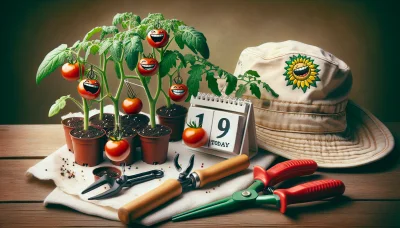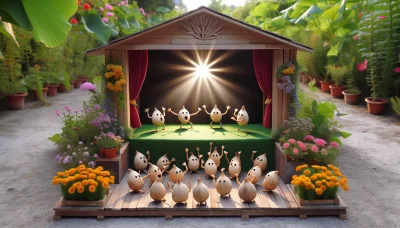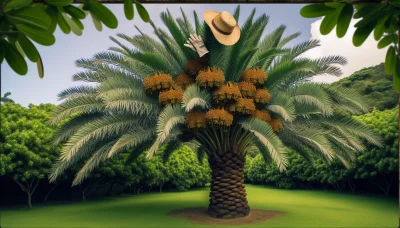Formal garden design Quiz
Test Your Knowledge
Question of
Introduction to Formal Garden Design
Formal garden design is a centuries-old tradition that emphasizes symmetry, geometric patterns, and orderly arrangements. Originating in the Renaissance gardens of 16th century Italy, this style was heavily influenced by the classical ideals of order and beauty. Formal gardens are characterized by their meticulous planning and maintenance, often featuring straight lines, perfect geometrical shapes, and a clear distinction between different garden areas. Plants are carefully selected and pruned to maintain specific shapes and sizes, contributing to the overall aesthetic of precision and elegance. Over the years, formal garden design has been adapted by various cultures around the world, each adding their unique touch to the fundamental principles of symmetry and order, making it a timeless and globally appreciated garden style.
Key Elements of Formal Garden Design
- Symmetrical Layouts
- Geometric Shapes
- Manicured Plants
Planning Your Formal Garden
Creating a formal garden is a rewarding endeavor that requires thoughtful planning and attention to detail. The importance of planning and layout cannot be overstated, as these elements are crucial in achieving the elegance and symmetry characteristic of formal gardens. Careful consideration of space is essential to ensure that all elements, from pathways to plant beds, are proportionally balanced and harmoniously integrated. Symmetry, a hallmark of the formal garden, guides the arrangement of plants, hardscape, and garden ornaments, creating a sense of order and beauty. By meticulously planning your garden layout, you can achieve a stunning outdoor space that reflects the principles of design and symmetry.
Popular Plants for Formal Gardens
- Boxwood (Buxus) - Known for its dense, evergreen foliage and ability to be shaped into precise forms. Ideal for hedges and topiaries in formal garden designs.
- Yew (Taxus) - Another evergreen favorite for formal gardens, valued for its fine texture, dark green needles, and versatility in shaping. It's often used for hedges, topiaries, and as a backdrop for flowering plants.
- Privet (Ligustrum) - Popular for its fast growth and ease of pruning, making it a top choice for formal hedges and privacy screens.
- Roses (Rosa) - While not evergreen, roses are classic in formal garden settings. Their variety in color, fragrance, and form allows for spectacular displays in geometric beds or as borders.
- Lavender (Lavandula) - Chosen for its aromatic flowers and gray-green foliage, lavender adds a sensory experience to formal gardens. It's often used to line paths or as low hedges.
- Hydrangea (Hydrangea) - With its large, showy blooms, hydrangea adds a touch of elegance and a pop of color. Perfect for borders or as a focal point in garden designs.
- Italian Cypress (Cupressus sempervirens) - Characterized by its tall, narrow growth habit, this evergreen is perfect for adding height and drama to garden vistas or for framing entrances.
Formal Garden Maintenance Tips
Maintaining a formal garden requires a consistent approach to pruning, weeding, and general care to ensure its beauty and structure. Regular pruning is essential to maintain the shapes and sizes of your plants, promoting healthy growth and flowering. Weeding should be done frequently to prevent unwanted plants from taking nutrients and space from your desired foliage. General care includes mulching, watering, and feeding your plants with the right fertilizers to enhance their growth and appearance. By adhering to these practices, your formal garden will remain a stunning and serene retreat.
Examples of Famous Formal Gardens
| Garden Name | Location | Size | Description |
|---|---|---|---|
| Versailles | Versailles, France | 800 ha | A symbol of the grandeur of French classical architecture, featuring meticulous lawns, parterres, and fountains. |
| Villa d'Este | Tivoli, Italy | 4.5 ha | Renowned for its Renaissance culture and especially for its hundreds of fountains, nymphaeums, and waterplays. |
| Kew Gardens | London, United Kingdom | 132 ha | One of the world's leading botanical gardens, home to the largest and most diverse botanical and mycological collections. |
| Peterhof Palace Gardens | Saint Petersburg, Russia | 102 ha | Known as the "Russian Versailles", famous for its series of palaces and gardens, including the Grand Cascade of fountains. |
| Summer Palace | Beijing, China | 290 ha | A masterpiece of Chinese landscape garden design integrating natural landscapes with manmade pavilions, halls, palaces, temples, and bridges. |
Designing Your Own Formal Garden
Embarking on the journey of designing your own formal garden is a thrilling venture that opens up a world of creativity and personal expression. While formal gardens are known for their symmetry, clean lines, and orderly appearance, there's ample room for you to inject your unique style and preferences into your design. Start by envisioning the layout, considering elements like pathways, hedges, and focal points to create a balanced yet captivating space. Remember, the beauty of a formal garden lies in its structure, but its soul comes from the personal touches you add. Whether it's selecting specific plant varieties that hold special meaning to you or incorporating decorative elements that reflect your personality, your formal garden can become a sanctuary that is both regal and deeply personal. So, gather your ideas, sketch your plans, and step into the rewarding process of creating a formal garden that is uniquely yours. Let your imagination guide you within the framework of formality, and you'll be amazed at the oasis you can create. Happy gardening!












